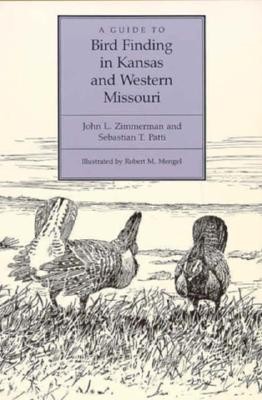| A Guide to Bird Finding in Kansas and Western Missouri Contributor(s): Zimmerman, John L. (Author), Patti, Sebastian T. (Author) |
|
 |
ISBN: 0700603662 ISBN-13: 9780700603664 Publisher: University Press of Kansas OUR PRICE: $17.96 Product Type: Paperback Published: May 1988 |
| Additional Information |
| BISAC Categories: - Nature | Birdwatching Guides - Nature | Regional |
| Dewey: 598.072 |
| LCCN: 87034655 |
| Physical Information: 0.6" H x 6" W x 8.9" (0.79 lbs) 240 pages |
| Themes: - Cultural Region - Plains - Geographic Orientation - Kansas - Geographic Orientation - Missouri - Cultural Region - Mid-South |
| Descriptions, Reviews, Etc. |
| Publisher Description: Kansas and western Missouri are astonishingly rich in birdlife. Located in the very center of the North American continent, the area is home to most of the eastern bird fauna and many of the western species, and even hosts occasional visitors from the far north. Over 400 species of birds have been recorded in Kansas alone, an abundance that places it among the top five birding states in the country. A Guide to Bird Finding in Kansas and Western Missouri is a guide to this rich mosaic of birdlife. Written for both resident and visiting birders, the book begins with an introduction to the region's avian diversity and to its eleven major biotic communities. Illustrated with 17 line drawings by renowned artist and ornithologist Robert Mengel, A Guide to Bird Finding also features 26 detailed maps, a checklist of birds of the region, and an annotated list of Specialty Species. The book's main focus, though is on birding tours--75 of them. Meticulously described and thoroughly road-tested, these tours lead down paved highways, dirt roads, and paths, past old cemeteries, around lakes, along creeks, into cities, and out onto the prairie, winding through the birding hotspots of Kansas and western Missouri. With this new guide in hand, birders can tailor their expeditions to focus on the big picture, taking advantage of all the birding possibilities a particular location has to offer, or the small picture, searching out one or two especially challenging species. Zimmerman and Patti have provided information on road conditions and tour routes, and have also zeroed in on a few birding surprises--like Bobolinks next to saline marshes in central Kansas. Among the many birding possibilities the book suggests are: a trip to the tallgrass prairie of the Flint Hills where Greater Prairie-chickens and Henslow's Sparrows can be seen; a tour of the Cimarron National Grassland, the best place in the U.S, to see Lesser Prairie-chickens; a tour of Missouri's Squaw Creek National Wildlife Refuge, the spectacular staging area for over 500,000 geese and other waterfowl; and a trip to Quivira National Wildlife Refuge and Cheyenne Bottoms, internationally significant wetlands that are an essential migration stopover for hundreds of species, particularly waterfowl and shorebirds, and even Whooping Cranes. |